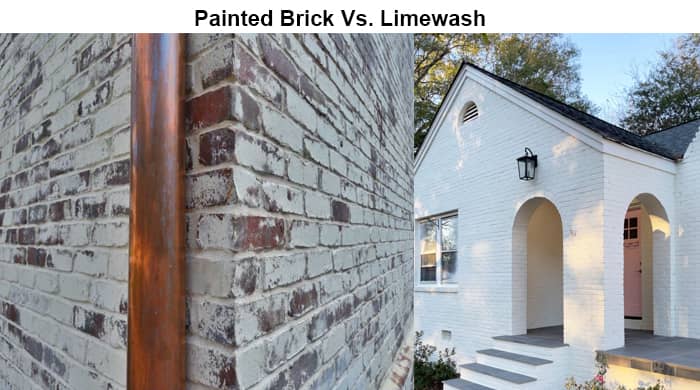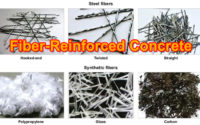Painted Brics Vs Limewash Bricks | Pros and Cons
Limewash and paint are also great options for making your red brick white. But the approaches taken and the outcome are entirely different. Which is best then? Whether to limewash or paint brick? Whose price is higher? Other than the way it looks, what is the main difference? Which is best for your home, and which?
Red brick can be made white using painted brick or limewash. But the parallels end there, sort of. Painted brick is only painted brick. Although it must be a paint specifically designed for brick, it is still paint. It’s an opaque, solid white coating that covers the entire surface of the brick and mortar. A brick wall can be painted white like any other wall, and a complete covering is achieved.
On the other hand, limewash is quite distinct. It is a much thinner mixture of lime and water that is intended to enter the brick rather than just rest on top of it.
Because the limewash is not completely opaque and covered, a lot of the red show may be seen through it. Additionally, some brick surfaces have no color at all. Because of how similar it looks, the German smear or whitewash may occasionally be mistaken for it.
Both of these techniques are excellent for making bricks white. But their finished appearance and design are significantly different. Limewash is thought to have a more rustic or antique appearance than painted brick.

Painted Brick
I’ve always been a big fan of the aesthetic of painted brick. I find that the appearance of brick when it is painted white has a certain allure. It’s a fantastic method to freshen up and modernize an outdated brick house. And doing it is pretty simple. Painting the brick white instead of replacing all of it or re-siding the house is much less expensive if you’re flipping or restoring an old, unsightly house.
Brick is a type of brickwork that has a high water absorption and retention capacity. Because it can breathe, using paint designed specifically for brickwork is crucial. Water trapped inside the brick will cause the paint to bubble if it is unable to breathe. It’s also crucial to allow the brick to completely cure before painting.
A brick house can be totally transformed by painting the bricks white. Even the oldest, dirtiest brick house will come to life and seem brand new with a fresh coat of white paint. However, remember that there is no turning back from it. Make very certain that’s the appearance you want before you do it because white paint cannot be removed from brick.
Pros
White bricks will give your house a clean, contemporary appeal. Painted bricks have the same effect whether the building is new or being renovated. However, it actually saves money when the house is older. Old brick homes can be painted to look and feel like new for a lot less money than they can be resided. It’s an excellent technique to remodel a brick house with a fantastic return on investment.
When the house is brand new, it’s also economical because you can utilize the least expensive bricks available. No need to spend a lot of money on bricks since you’ll be painting them anyhow. Just make sure that the texture and color of each brick matches the others.
Another benefit is the increased water protection that paint provides. An older brick house might have its bricks last longer if it is painted.
Since painted white brick is currently highly fashionable, your property will look great. If you’re remodeling or building a new house, this will be very helpful.It’s a safe choice because it fits almost any type of home.
Although many individuals dislike the color of brick, they appreciate the way it looks and the texture it possesses. Red brick is frequently considered to be outdated. With paint, you may combine the advantages of brick with the crisp, airy appearance of white.
Cons
Traditional, unpainted brick requires very little upkeep. Painting brick requires maintenance.
Cleaning the frequently unpainted brick on the white surface is necessary. Possibility of trapping moisture, leading to mold growth and eventual brick deterioration.
There are often spots when the paint simply peels off and is left behind with some white debris. and heavily on the painted brick. The tougher the paint is to remove from a brick surface.
What is Limewash Brick?
Slaked lime, an alkaline substance made from limestone and clay, is used to create limewash, a specialized coating. Like paint, this combination can be brushed on exterior walls, but unlike paint, limewash doesn’t dry to a solid layer. Instead, it leaves behind a permeable layer that enables rainwater to escape from the wall rather than condense there. This makes limewash perfect for shielding exposed brick from the weather while maintaining their breathing ability.
Limewash’s muted colors and gritty texture give it a pleasing visual appeal as well. The end result is a weathered appearance akin to villa residences in Europe.
Limewash brick construction is undoubtedly a stunning method that is gaining in popularity. It’s a method that gives your home an antique European appearance. When done properly, it may breathe new life into aged brick or make your new home appear to have been there for a very long time.
Although we currently adore it, we worry that we might grow to dislike it.
Pros of Limewash Brick
Since limewash penetrates the brick, one advantage is that it won’t flake off like regular paint would. Compared to painted brick, this implies less maintenance. It permits the brick to breathe as well.
Speaking of less upkeep, limewashed brick gives a weathered and worn appearance, making natural aging and wear less obvious.
The fact that limewash is all-natural is another benefit. It doesn’t include the same chemicals as normal paint.
Cons
Since the color of the bricks would be partially apparent, using a particular type of brick is a major drawback for us with limewash. This indicates that we cannot save money by utilizing a less expensive brick, as we could do with painting.
Limewash has a highly distinctive appearance that must be applied properly to look excellent. If you don’t hire a professional, this could end up being a scam.
Is Brick Painting or Limewashing More Affordable?
Limewash is a far more cheap substance than paint. By purchasing hydrated lime and combining it on your own with water, you can make limewash. For just $50, lime can totally cover a typical-sized home. And water is free. Easily ten times as much is spent on paint. You apply limewash using the same brushes, but you don’t commonly use a roller or a sprayer.
In terms of labor expenses, limewash is typically less expensive here. There must be a complete and thorough coat of paint applied to everything. Any hint of the brick or mortar colors should be absent. A brush-over of each tiny fissure is the last step in a brick painting operation. Each and every divot and fissure in the masonry.
Both money and time are needed. Since limewash’s application is designed to be spotty and you want to be able to see the brick color through it, none of this is necessary.
Another area where limewash is less expensive than paint is in the preparation. All the windows and doors must be taped if you plan to spray, which will cost you money for both the labor and the supplies. All of it is not done while using limewash. In reality, there isn’t much planning. Compared to paint, which is far more exact, limewash has a rougher surface. It’s not expected for a home that has been limewashed to seem as pristine as painted brick.
In terms of long-term value, painted brick underperforms limewash. Eventually, both methods must be performed again, albeit limewash is less expensive.
What is the durability of limewash on brick?
Reapplying limewash is often advised every 5-7 years. But it differs.
The thickness of the initial coating, the environment, the brick you limewashed, and other elements all have a big impact. I’ve seen limewash coats endure 20 years without a new treatment and still look fine. Reapplying the limewash is a good idea eventually since it keeps the brick looking good, even though it’s not always necessary for aesthetic reasons.
Limewash is often applied in several thin coats that build up rather than one thick one. If you apply it properly and utilize the perfect amount of lime in your mixture, you can easily go over 10 to 15 years without needing a fresh coat.
Limewash may scrape the brick since it is chalky. An immediate spot repair may be required if there are any areas where the limewash rubs off.
You can wait longer before applying limewash again if you limewashed fresh brick that doesn’t need the extra protection. However, you would need to reapply limewash considerably sooner if you applied it to protect older brick from the elements. You should abide by the suggestion of 5-7 years in this circumstance.




